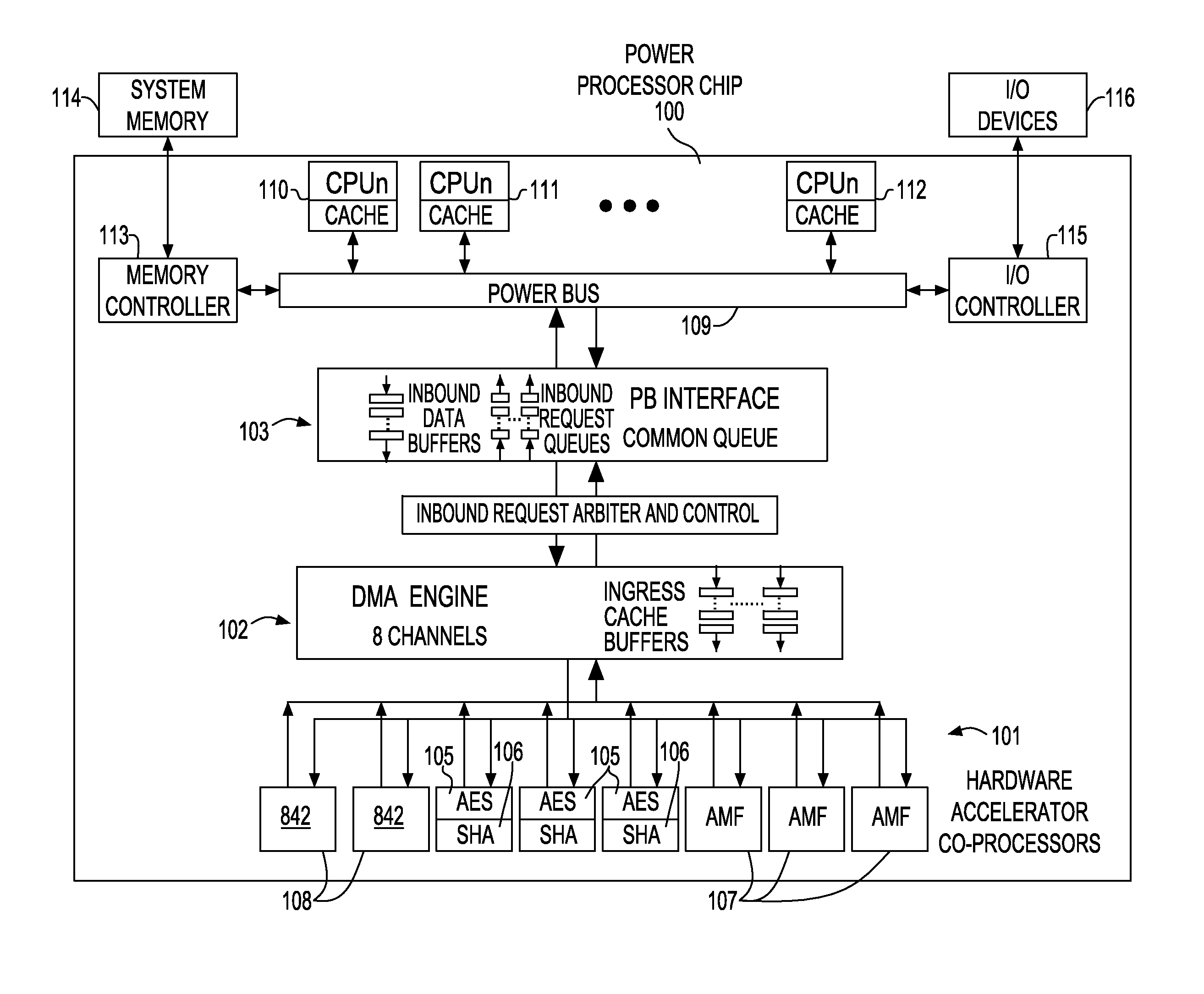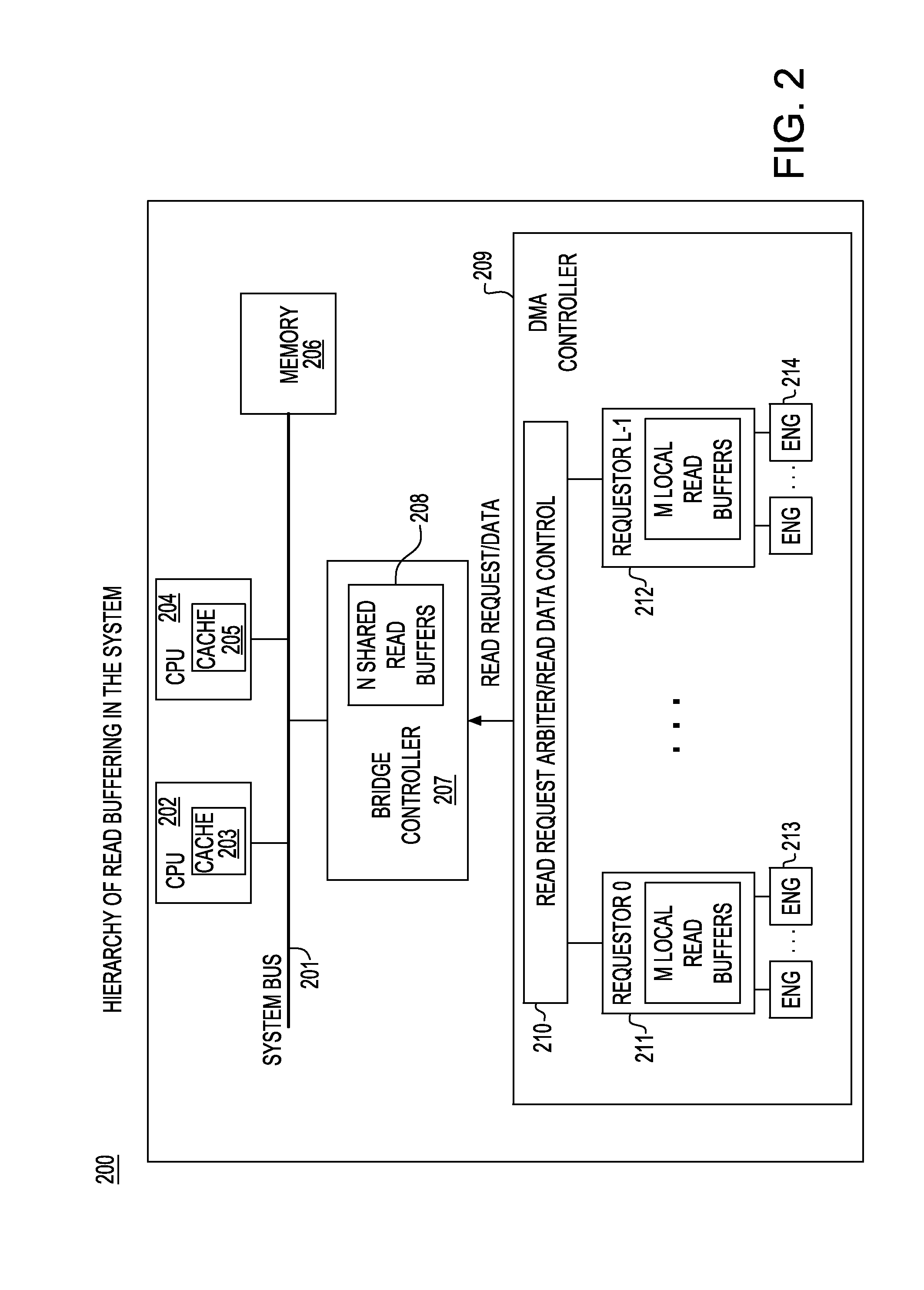Dynamic shared read buffer management
- Summary
- Abstract
- Description
- Claims
- Application Information
AI Technical Summary
Benefits of technology
Problems solved by technology
Method used
Image
Examples
first embodiment
[0051]With reference to a first embodiment, FIG. 3 shows a schematic block diagram and abbreviated flow chart illustrating logic elements and process steps to limit the number of outstanding read data requests for a requesting bus agent. Requestor logic 300, associated with a dedicated DMA channel, services one or more hardware acceleration engine coprocessors 304a-304m and provides local buffers 302 from 0 to m-1 to hold a cache line of data received from the bridge controller 207 and stores status bits indicating whether the local buffer 302 is idle or holds valid data. The local buffers will also indicate status of whether a request for read data is pending to the bridge controller 207. The requests are serviced in a first-in-first-out (FIFO) manner, such that no request or data is transmitted out of order. However, those of skill in the art will appreciate a variety of ordering schemes and priority functions may be implemented to service requests out of order. The requestor may ...
second embodiment
[0055]Referring to FIG. 5, control logic 500 for read data pacing from bridge 207 to a requestor is shown. When a read request is assigned to a shared buffer, the requestor ID (0:L-1) and local buffer ID (0:2m-1) information from the request is stored in a control register 501. Shared buffer control registers 0:n-1 provide requestor ID (0:L-1) and local buffer ID (0:2m-1) information to select mux logic, which forwards a buffer ready signal to the bridge 207. The select mux logic provides the same buffer ready signal back to the shared buffer control registers to reflect which requestor and corresponding local buffer are ready to receive the requested read data. The buffer ready signal is encoded with some percentage of the total buffer space represented as a virtual buffer, which allows the system to accommodate more read requests than available local buffers due to the latency associated with the data and request being propagated between the bridge and the requestor control logic...
PUM
 Login to view more
Login to view more Abstract
Description
Claims
Application Information
 Login to view more
Login to view more - R&D Engineer
- R&D Manager
- IP Professional
- Industry Leading Data Capabilities
- Powerful AI technology
- Patent DNA Extraction
Browse by: Latest US Patents, China's latest patents, Technical Efficacy Thesaurus, Application Domain, Technology Topic.
© 2024 PatSnap. All rights reserved.Legal|Privacy policy|Modern Slavery Act Transparency Statement|Sitemap



